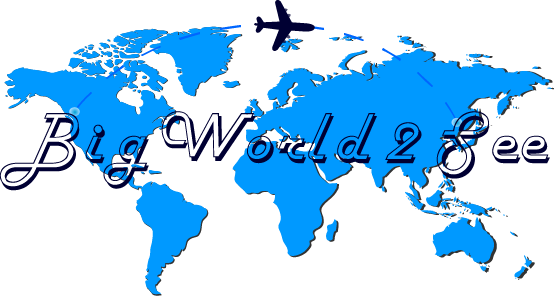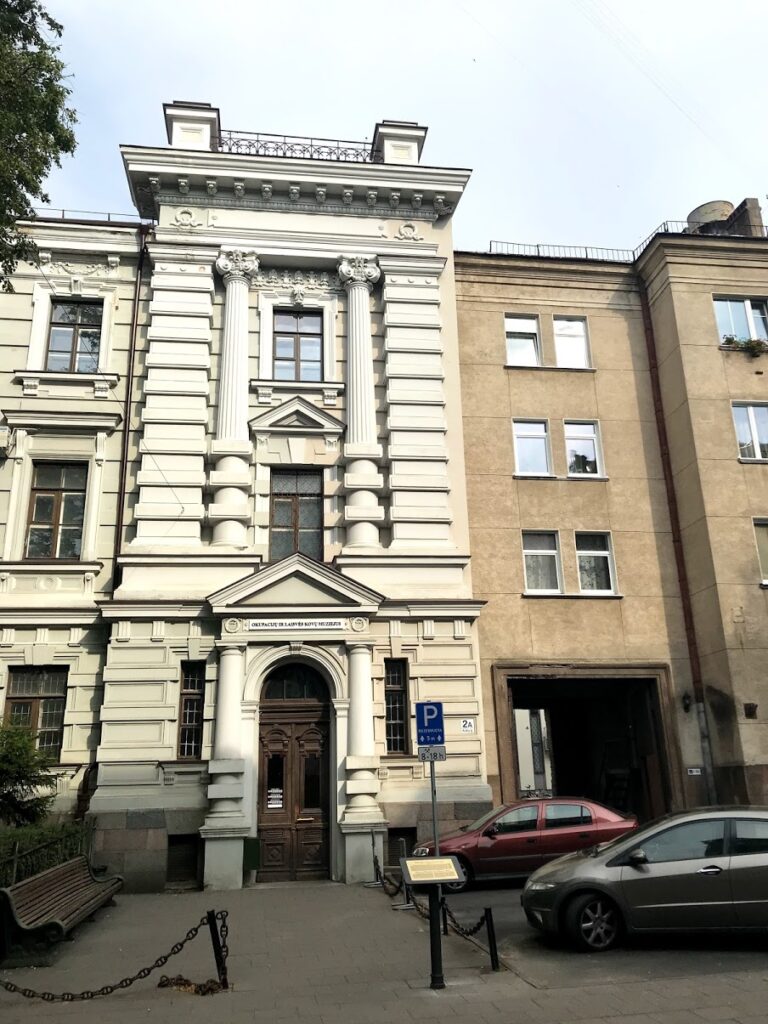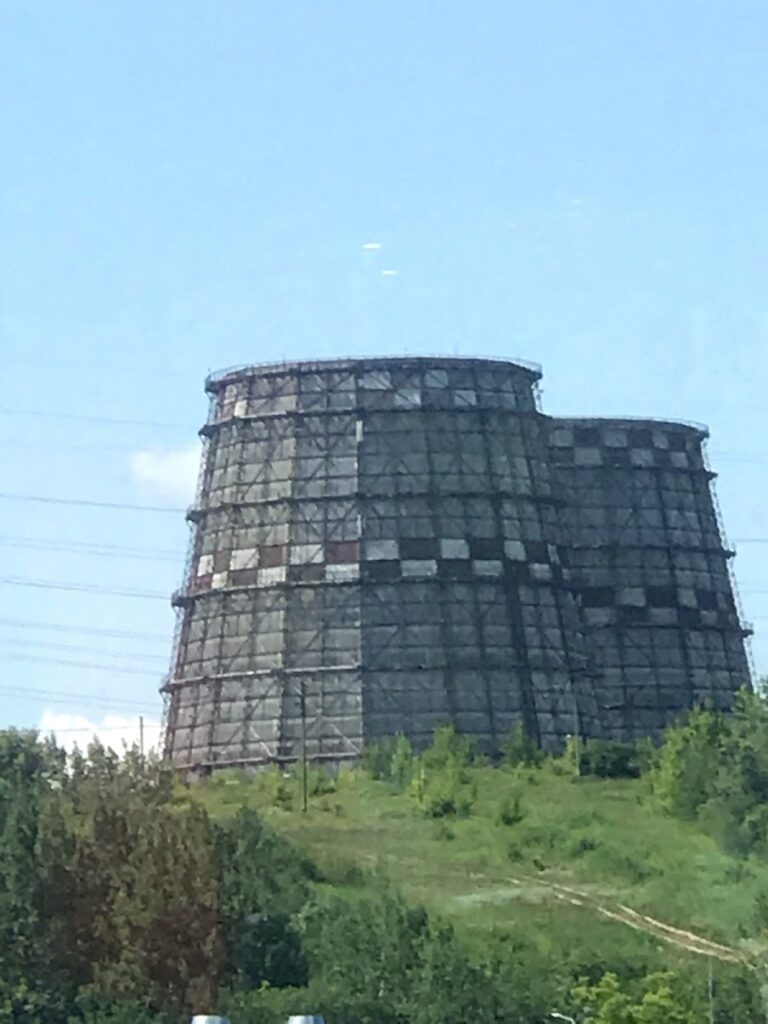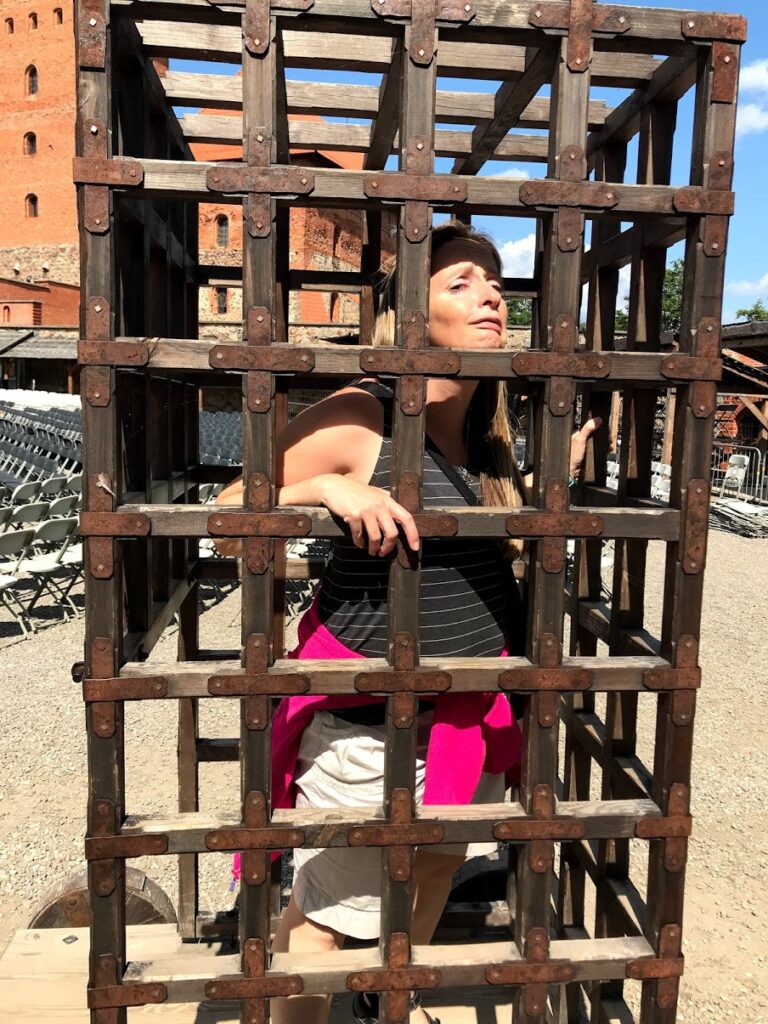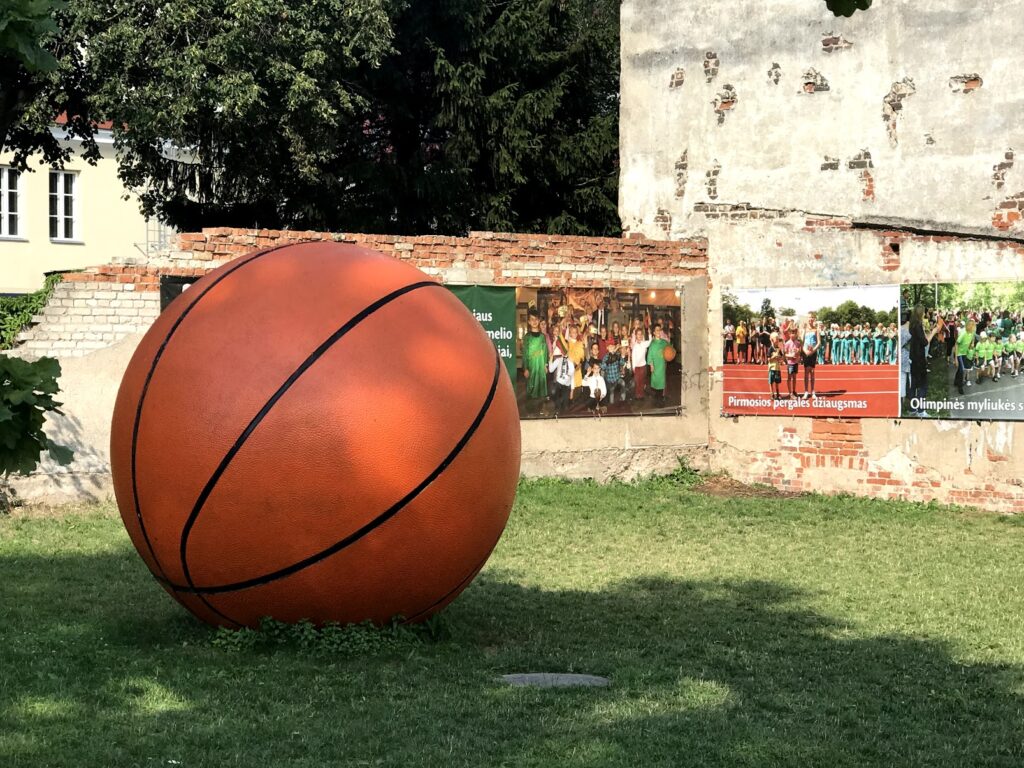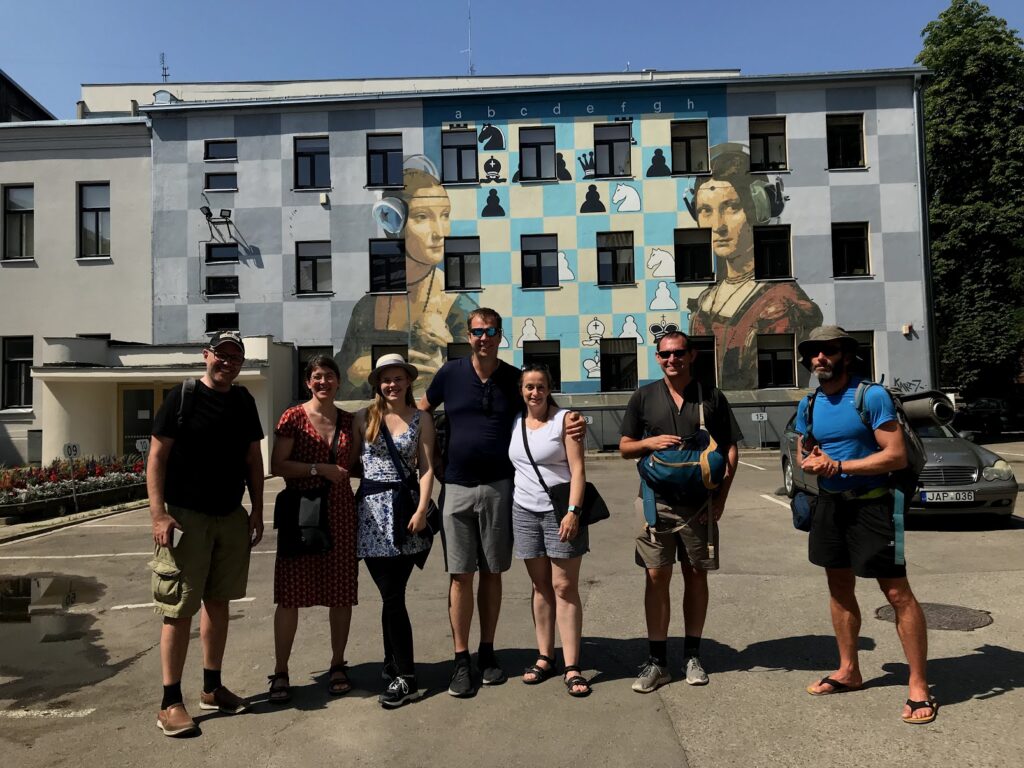We spent a week in Lithuania (Lietuva). We booked an AirBnB for a week in Vilnius with the idea of doing a couple of day trips outside of the city. One of the hard things about travelling for a year is being continuously on the move. We have been moving so fast through Scandinavia and the Baltics. We decided to slow down a bit by booking a week at a time. Vilnius would be our home base for this week. This means a little slower pace and not so much action. The nice thing is we can buy some groceries and do not have to eat in restaurants every day.

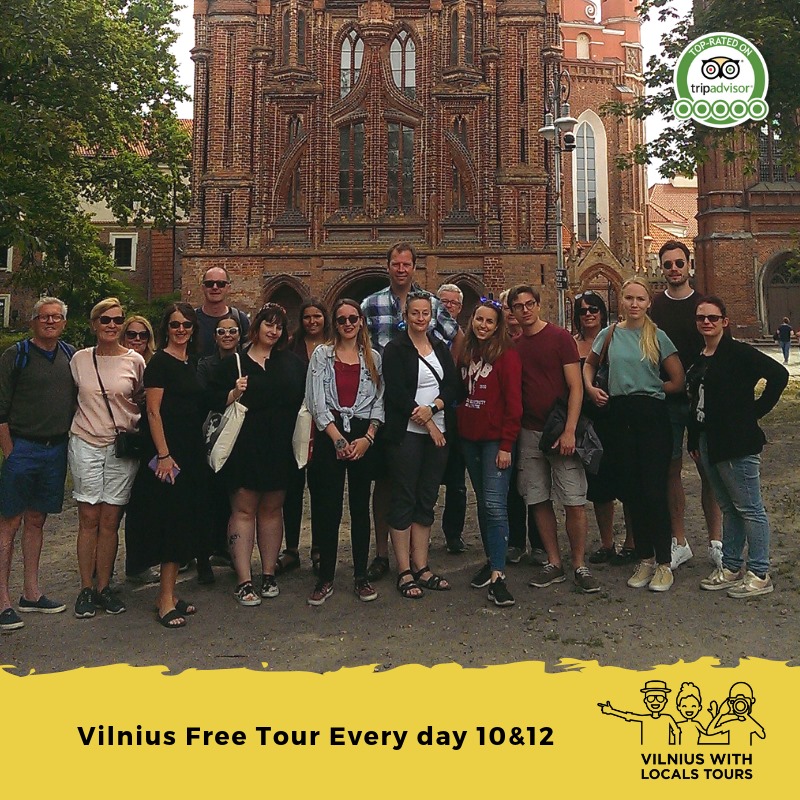

On our first full day in Vilnius, the forecast was rain after lunch. The free walking tour is available every day at 10am and 12pm. So, we decided to go for the 10am tour. As we started the tour, the rain started. It didn’t last though. Our guide’s name was Sarunas, but he told us to call him Sharon as in Sharon Stone. I guess the S has an SH sound and they add as, is, or us to the end of names. Sharon it was. The tour started from city hall which was about a fifteen minute walk from our place.

This tour took us through the Old Town area with a lot of history. Lithuania is bordered by Latvia to the north; Belarus to the east; Poland to the south; Kaliningrad (Russia) to the southwest; and the Baltic Sea to the west. Its location and proximity to western Europe meant it was the first Baltic state to come up against the crusades. They resisted and fought wars with different people but in the end agreed to accept Christianity to end the wars. The people were pagans though, so to get them to show up for baptisms, they were offered free linen shirts. Some of them went to multiple baptisms to get multiple shirts. Whole towns of men received the same Christian name (ex. John) as did the women (ex. Mary). That said, the pagans mostly rejected the religion but went through the motions. Lithuania officially adopted Christianity in 1387.
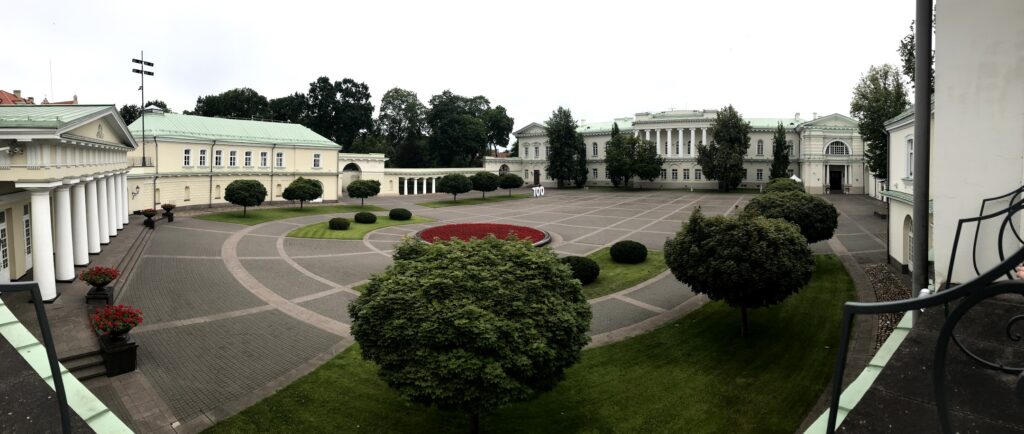


Lithuania was the first European country to have a written constitution (1791) and the second in the world (USA in 1788). It may not appear on lists given Lithuania’s periods of occupations through its history. Vilnius University is also the oldest university in eastern Europe (1579). In the 19th century, under its occupation by tsarist Russia, books in Lithuanian were banned and therefore book smugglers brought books written in Lithuanian from other countries.

In 1918, Lithuania declared independence following fighting with both the Bolsheviks and Polish. However, they were still dealing with German troops occupying it. After WWI, Russians were expanding and Lithuania was fighting them. A peace treaty was finally signed with Russia and a final constitution signed in 1922. Despite this, Lithuania remained under partial Soviet control. During WWII, Russia took control of Lithuania in 1940 and then Germany took it in 1941. Under Nazi control, it is estimated that about 190,000 Lithuanian jews were murdered (75-90%) during the Holocaust.
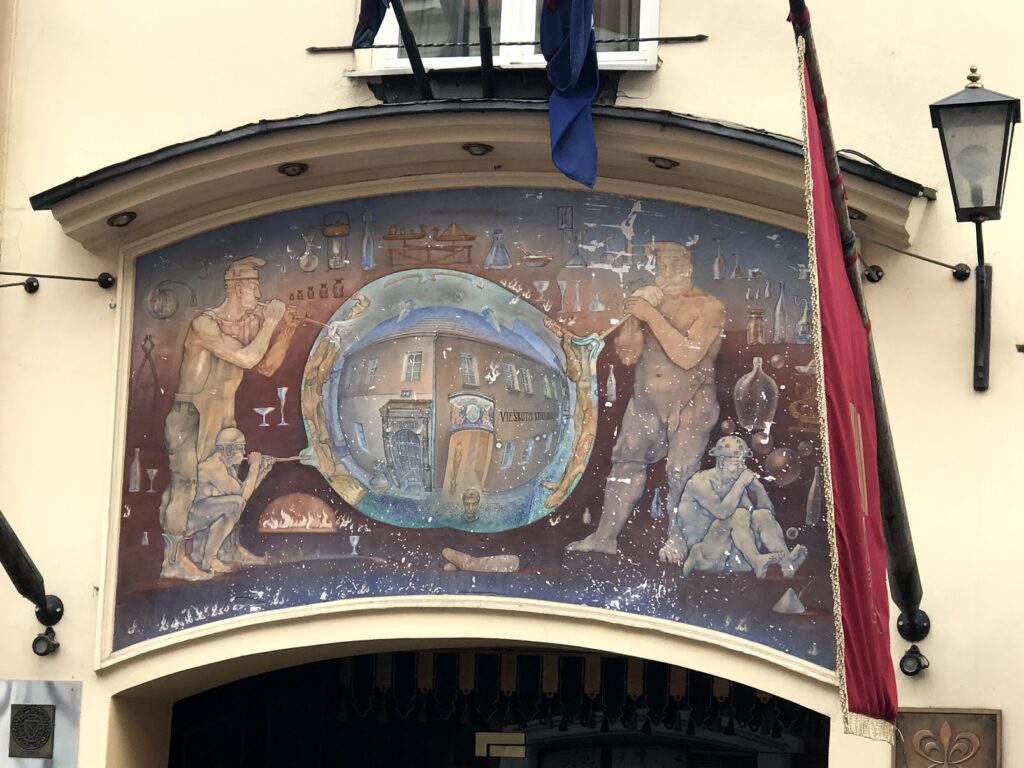
In 1945, Russia took Lithuania again and it remained under Soviet rule until 1990. Lithuania was the first SSR that declared independence during the fall of the Soviet Union. Although it is only 30 years since its free and independent state, Lithuania is a growing country and economy. Nevertheless, there is still lots of evidence of its soviet times.

One of the areas we visited in Vilnius is called Užupis. The Republic of Užupis was declared in 1997 in a 148 acre area of Vilnius. Sounds a lot like Christiania in Copenhagen right? Not exactly. Christiania is founded on the idea of anarchism, collectivism and the squatter movement. There are no laws and no government. However, the Republic of Užupis has a constitution, a government and even its own currency. It is unclear whether this state is intended to be a joke. Its national day is April 1st. There is free beer on this day from a public fountain (but it only lasts about a half hour). The currency is based on the value of one beer. One whatever it is called is always worth one beer in the pubs of Užupis. Check out its constitution to get a better sense of their values and rights. I like numbers 10-13 in particular.




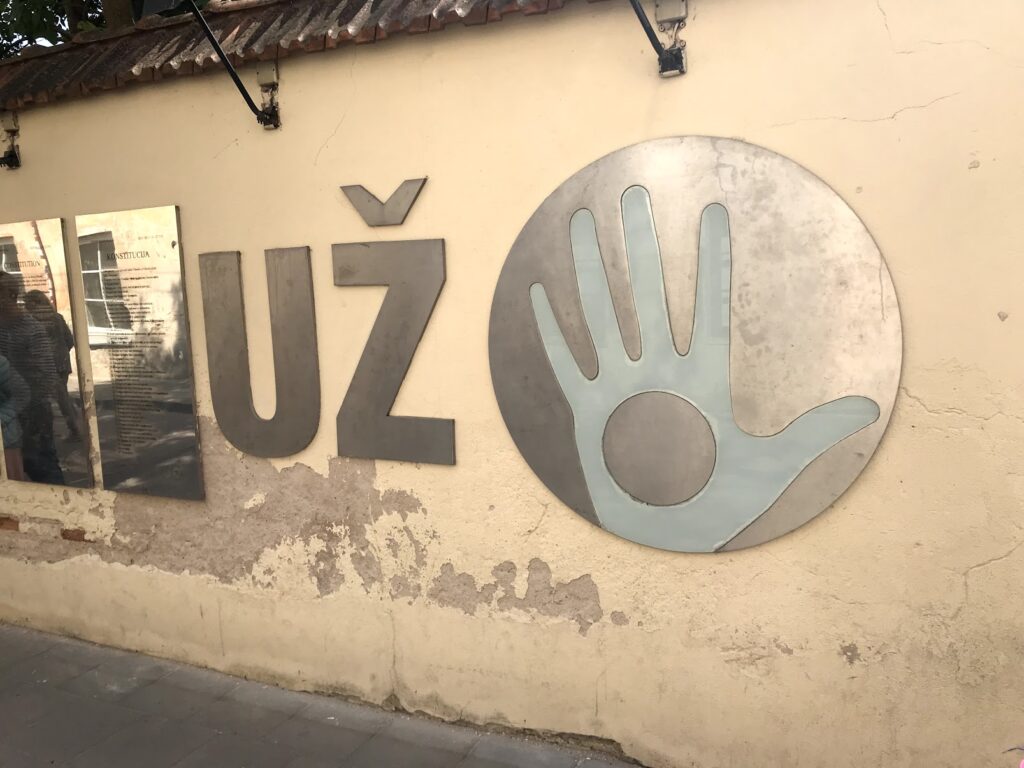

After the walking tour, we went to a pub called Šnekutis. It was recommended to us by our tour guide for good local food at a good price. They had a businessman’s lunch for €4.20. This included a good bowl of soup and a choice of one of about 4 main courses. We chose two different ones so we could have a taste of both. We had a pork schnitzel and a potato pancake with bacon. For two meals, two draft beers and a piece of apple pie with ice cream (which we shared), the cost was €16. It was a lot of food and we really did not have an appetite for dinner that evening. We returned to our apartment just in time for the rain to start. It rained hard for hours and so we just stayed in.

The next morning it was still raining. We did not emerge from our place until after noon. We headed for the free Alternative Walking Tour at 3pm by the same company. This time, our guide’s name was Samuelis. The Alternative Tour takes you to areas of the city that are very different from the Old Town. We examined street art that was part of an attempt to change the fact of the city. Each piece has a story/meaning and I would much rather look at this than go to a museum of art. Check out some of the pictures and try to guess what the message is. There is an area which is called an open air museum in which there are many examples of street art for you to examine.

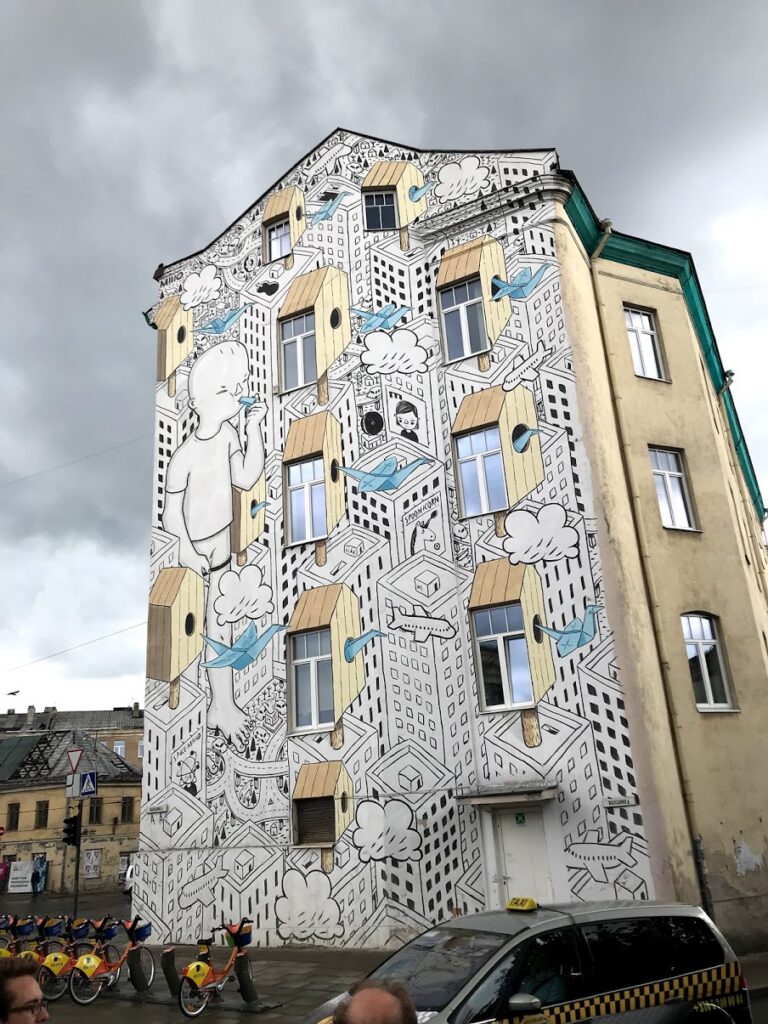
Very busy 
Stallin with a pig nose 
Trump kissing Putin 
Check out the eyes 
Graffiti art of a kid doing graffiti 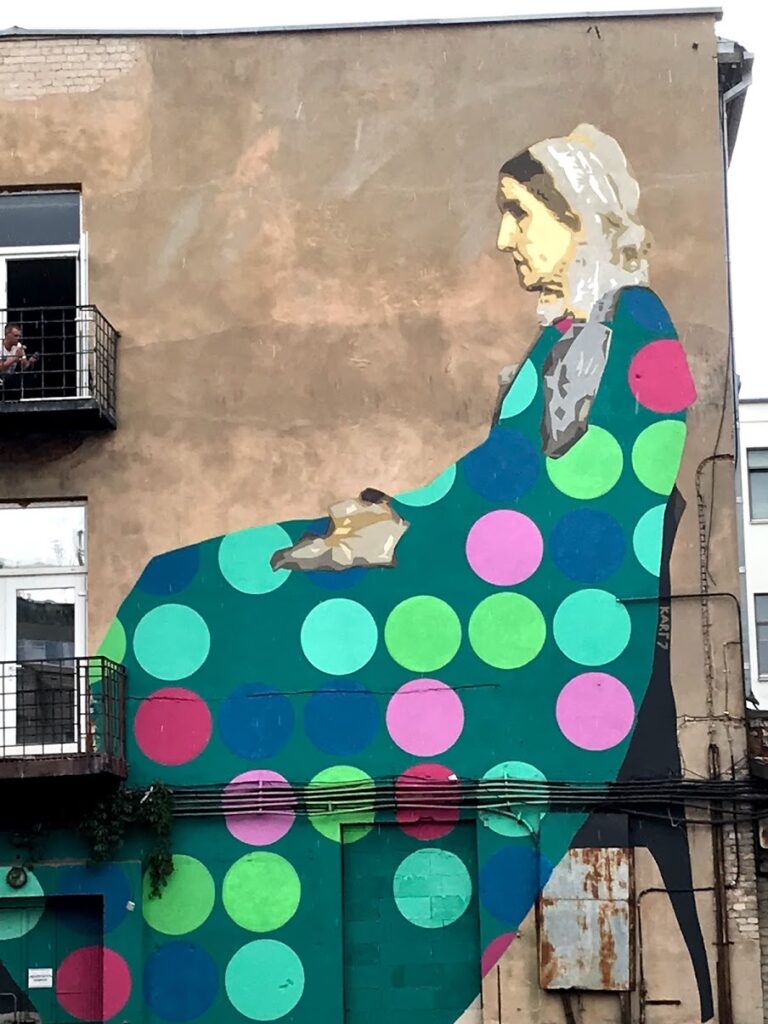
Whistler’s Mother – but what is with the polka dots? 
What is the message? 
Can you spot the hidden basketball? 
The message at the top is about the challenge they had with orphanages in the past 
All One All Equal (the artist only lifted the brush 6 times for the outline)
During both tours, the guides made reference to the HBO miniseries called Chernobyl. I had never heard of it. Apparently, much of it was filmed in Lithuania (Vilnius in particular). I guess many of the streets and buildings look like they could be Pripyat and Kiev. I watched the series later just to see what they were referring to. I also hunted down a couple of the locations that were used in the series.
The next day, we did our own walking tour to places not in the tours. We had marked them down on our map and then followed our own route. This included a stop at the Hill of Three Crosses. I decided to look and see if there were any geocaches in the area. Low and behold, there was one basically under where we were sitting. It took less than one minute to find. So, now we have a Lithuanian cache. We explored and wandered the city for about five hours and walked about 17,000 steps. Exploring on your own is a great way to get a feel for the city and the people. The tours are great for giving us the background we do not have. BTW, we also ate our lunch at Šnekutis. When we find a place we like we are often inclined to go back.
The Baltic Way was a peaceful political demonstration which took place on 23 August 1989 when approximately two million people joined their hands forming a 600 km long human chain through the Baltic countries, thus demonstrating their unity in their efforts towards freedom.
http://www.thebalticway.eu/en/history/
I mentioned that we stayed in Vilnius as long as we did so we could do some day trips. To this point, you might be wondering why we had not done any yet. We planned two… one on Friday and one on Saturday.
On Friday, we took a bus in the afternoon to Trakai. It is about a half hour bus ride that costs about €2 each way. In Trakai, there is a castle built on an island in a lake. I think the castle is what draws most people. It was built by Grand Duke Gediminas in the 1300s. It was demolished and burned in the mid 1600s by the Russian Tsardom and remained in this state as a historical landmark. Efforts to reconstruct it began in the 1920s but wars started and stopped the efforts. The Trakai Castle is now a museum with lots of displays of different artifacts, not all related to Lithuania.

The town of Trakai is simple and cute. From the bus stop, there is about a 2km walk to the bridge over to the castle. There are booths selling souvenirs and food. We used Trakai as a place to get some hiking in. We took a train back from Trakai to Vilnius. Nic likes the train better than the bus. We got back to our place around 8pm or so.
Kaunas is the second biggest city in Lithuania. There are lots of students living in Kaunas for university. It is also a big basketball city. Did I mention that basketball is the second religion in Lithuania (some say first)? Basketball is to Lithuania as Hockey is to Canada. The biggest Lithuanian celebrities are basketball players. The men’s national team is ranked #6 in the world (Canada is ranked #23 at the time of writing this). Not bad for a country of under 3 million people. BTW, Canada plays Lithuania in pool play in September in China for the FIBA World Championships. The women are ranked #29 (Canada is ranked #5 for women at the time of writing this). Interestingly, for U18 boys, Canada and Lithuania are tied for 2nd in the world. The future is looking bright for Canada… But I digress… back to Kaunas.
We took a morning bus from Vilnius to Kaunas on Saturday. The railway system in Lithuania is undergoing some major work. They are working towards connecting Lithuania, Latvia and Estonia by rail. The plan is also to connect it to Poland and therefore the rest of western Europe. What surprised us to learn is that the tracks in the Baltics are a different size than the tracks in Poland. We guessed that the difference was Soviet railways from the rest of Europe. This railway project is taking way longer than it was supposed to and as a result you cannot take a train from Vilnius to Kaunas without having to take a bus part of the way. This is also why we are taking a bus from Vilnius to Warsaw rather than a train. Once in Poland, we will be able to take trains more. Man, I have really digressed again.
So our day trip to Kaunas. We arrived at about 11am. We had signed up for a free walking tour at noon. We were about a half hour early when we arrived and things were very quiet given that it was Sunday morning. We found a place for a coffee/tea.
The walking tour group was very small… 4 Germans, 1 Pole and us. The guide was a student who had lived in Kaunas for six years. She was from Azerbaijan. It sounds like Narmin was involved in setting these tours up and they have only been doing them for three months. The tour took us a lot of areas but did not go into Old Town. The beginning of the street art movement started with the Kaunas cats. An anonymous tagger began putting simple happy cat tags around the city. This eventually led to a the city’s efforts to create an open air museum somewhat like that in Vilnius.
